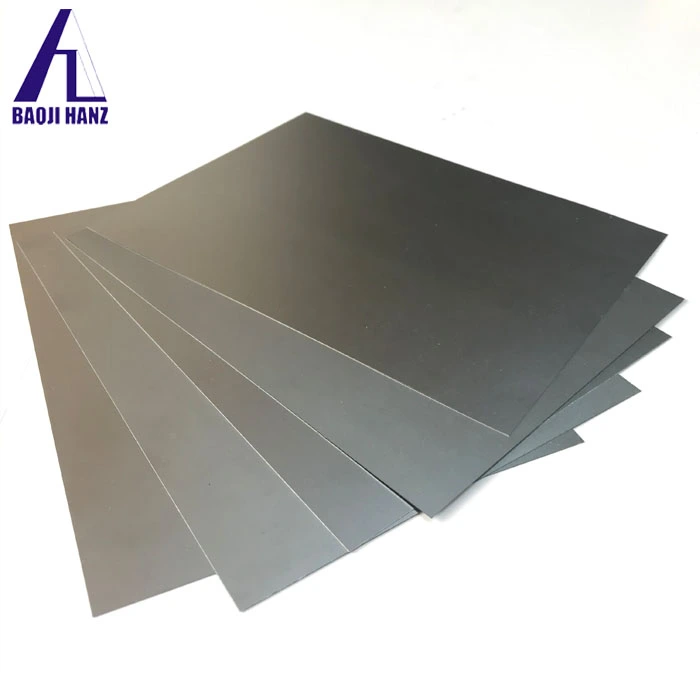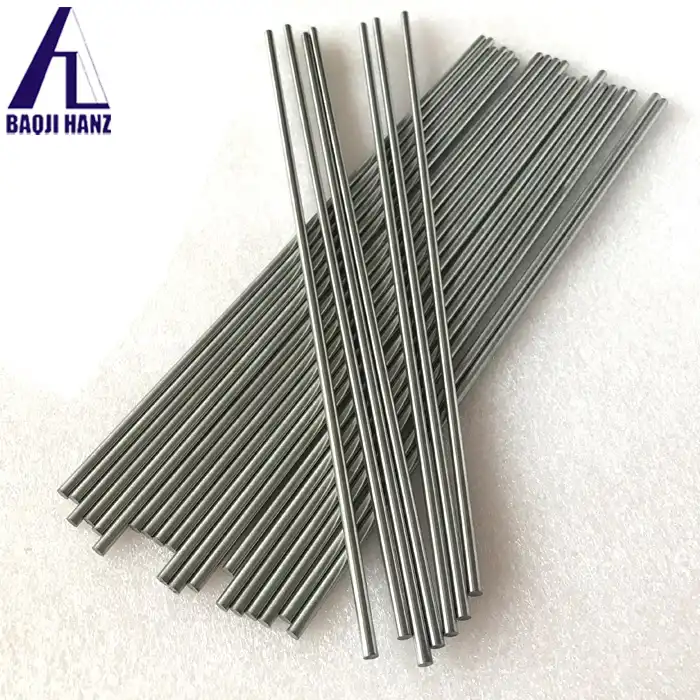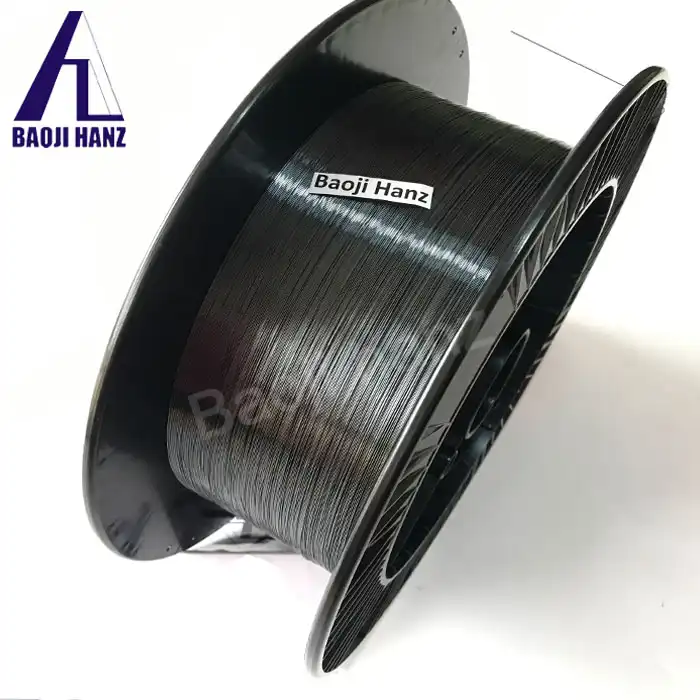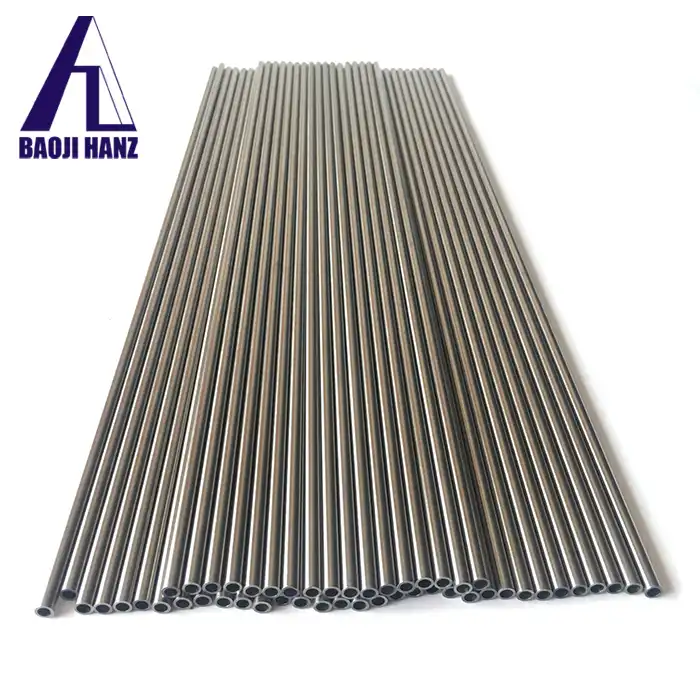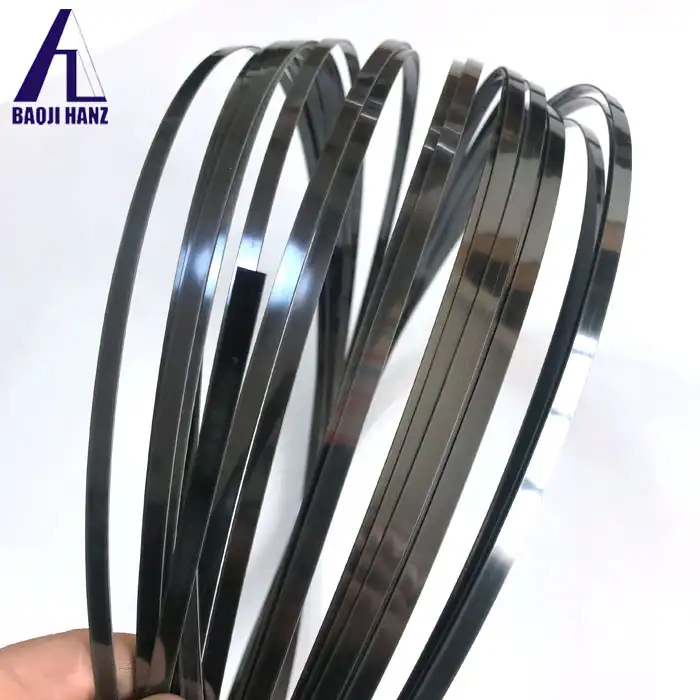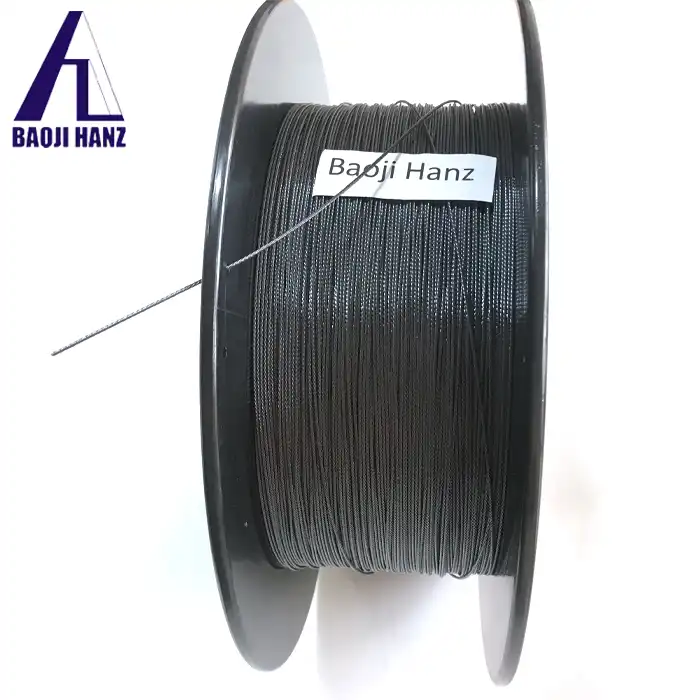What Industries Commonly Use Nitinol Capillary Tubing?
2025-03-27 21:49:02
Nitinol capillary tubing has emerged as a revolutionary material in various high-tech industries due to its unique properties and versatile applications. These specialized tubes, characterized by their small diameters and exceptional performance capabilities, are transforming how engineers and manufacturers approach complex design challenges. Capillary nitinol tubes, composed of nickel-titanium alloy, offer an impressive combination of shape memory, superelasticity, and corrosion resistance that makes them invaluable across multiple sectors.
The question of which industries commonly use capillary nitinol tube technology has become increasingly relevant as this innovative material continues to gain traction. From life-saving medical devices to aerospace components and advanced electronics, these specialized tubes have found their way into applications where conventional materials simply cannot deliver the necessary performance. The unique ability of these tubes to return to predetermined shapes when heated, combined with their excellent flexibility and durability, makes them particularly valuable in settings requiring precise, reliable performance in confined spaces.
Medical Applications of Nitinol Capillary Tubing
Minimally Invasive Surgical Instruments
The medical industry relies heavily on capillary nitinol tubes for creating sophisticated minimally invasive surgical instruments. These tubes, with outer diameters as precise as 1.61mm and customizable wall thicknesses ranging from 0.1mm to 15mm, provide surgeons with unprecedented access to difficult-to-reach areas of the human body. The superelastic properties of nitinol allow these instruments to navigate through tortuous anatomical pathways without kinking or permanent deformation. When designing catheters and endoscopic tools, manufacturers capitalize on the material's ASTM F2633-07 standard certification, ensuring consistent performance across various medical procedures. Capillary nitinol tube components are particularly valuable in neurovascular interventions, where their small diameter and exceptional flexibility enable procedures that would otherwise be impossible using conventional materials. Additionally, the biocompatibility of nickel-titanium alloys makes them ideal for prolonged contact with body tissues, reducing inflammation and adverse reactions during and after surgical procedures.
Cardiovascular Devices and Stents
In cardiovascular medicine, capillary nitinol tubes have revolutionized the treatment of heart and blood vessel disorders. These specialized tubes form the foundation for self-expanding stents, guidewires, and catheter delivery systems. The shape memory effect of nitinol allows stents to be compressed into a small diameter for insertion and then automatically expand to their predetermined shape once deployed in a blood vessel. With wall thicknesses that can be precisely controlled and lengths of up to 6000mm available, manufacturers can create highly specialized cardiovascular devices tailored to specific patient anatomies. The corrosion resistance of capillary nitinol tube materials ensures long-term implantation success, even in the challenging chemical environment of the human bloodstream. Furthermore, the high fatigue resistance of these tubes makes them suitable for applications where cyclical loading occurs with each heartbeat, providing patients with durable, long-lasting implants that maintain their performance characteristics over time. The medical industry values the consistent quality control standards maintained by suppliers like Baoji Hanz Metal Material Co., Ltd., which ensures these critical components meet the rigorous demands of cardiovascular applications.
Orthopedic and Dental Instruments
Orthopedic and dental fields have increasingly adopted capillary nitinol tube technology for specialized instruments and implants. These tubes, which can undergo sophisticated processing services including bending, welding, decoiling, cutting, and punching, provide excellent platforms for creating bone fixation devices, spinal implants, and dental arch wires. The superelasticity of nitinol allows orthodontic wires to apply consistent, gentle pressure to teeth over extended periods, improving treatment outcomes while reducing patient discomfort. In orthopedic applications, the shape memory properties enable the creation of self-adjusting implants that can adapt to bone growth or changes in patient anatomy over time. What makes capillary nitinol tube particularly valuable in these contexts is its ability to withstand the repetitive stress and strain encountered in daily movements without experiencing mechanical failure. Additionally, the smooth surface characteristics achievable through advanced manufacturing processes facilitate ease of insertion and removal when necessary. With minimum order quantities as low as 3 meters and custom packaging options available, even specialized medical practitioners can access these high-performance materials for specific clinical needs. The fast delivery times offered by manufacturers further support the rapid innovation cycle in orthopedic device development.
Aerospace and Defense Applications
High-Performance Actuators and Control Systems
The aerospace and defense industries leverage capillary nitinol tube technology for developing sophisticated actuators and control systems. These specialized tubes, with their precise outer diameter of 1.61mm and customizable wall thicknesses, provide unparalleled performance in high-stress, weight-sensitive applications. Aircraft manufacturers utilize the shape memory effect of nitinol to create morphing airfoils that can adjust their configuration during flight, optimizing aerodynamic efficiency across different flight regimes. The exceptional fatigue resistance of capillary nitinol tube components enables them to withstand thousands of actuation cycles without degradation in performance, making them ideal for flight control surfaces and landing gear mechanisms. In spacecraft applications, where reliability is paramount and repair opportunities non-existent, the self-resetting capabilities of nitinol actuators provide crucial redundancy for mission-critical systems. Defense contractors value the material's ability to function across extreme temperature ranges, from the frigid conditions of high-altitude flight to the heat generated during high-speed maneuvers. Additionally, the corrosion resistance of nickel-titanium alloys ensures long-term functionality even when exposed to harsh environmental conditions encountered during military operations. With manufacturers offering OEM services for custom specifications, aerospace engineers can develop proprietary designs that precisely meet the demanding requirements of next-generation aircraft and defense systems.
Vibration Damping and Structural Components
Capillary nitinol tubes excel in aerospace applications requiring vibration dampening and structural support. The inherent high damping capacity of nickel-titanium alloys makes these tubes effective at absorbing and dissipating mechanical energy, reducing fatigue damage to sensitive components during launch and flight operations. With lengths available up to 6000mm, these tubes can be integrated throughout aircraft structures to mitigate the effects of engine vibration, turbulence, and acoustic loading. The superelasticity of capillary nitinol tube materials allows them to absorb significant deformation energy without permanent damage, providing passive protection against unexpected mechanical loads or impacts. In satellite deployment mechanisms, the shape memory properties enable compact storage configurations that reliably expand upon reaching orbit. Engineers particularly value the material's excellent strength-to-weight ratio, which helps minimize the overall mass of aerospace systems without compromising structural integrity. The ASTM F2633-07 standard certification ensures consistent performance across production batches, a critical consideration for aerospace applications where component failure could have catastrophic consequences. Furthermore, the ability of these tubes to maintain their mechanical properties across extreme temperature variations—from the cold of high altitudes to the heat of reentry—makes them invaluable in spacecraft thermal management systems. The availability of fast delivery and custom sizing options supports the rapid prototyping and development cycles characteristic of modern aerospace research and development programs.
Thermal Management Systems
Aerospace thermal management represents another crucial application area for capillary nitinol tube technology. These specialized tubes, with their small inner diameters and high surface-area-to-volume ratios, provide efficient heat transfer capabilities in space-constrained environments. Satellite cooling systems utilize networks of capillary nitinol tubes to transport heat from sensitive electronic components to radiative cooling surfaces, maintaining optimal operating temperatures in the extreme thermal environment of space. The excellent corrosion resistance of nickel-titanium alloys prevents degradation of cooling system performance over extended missions, while their mechanical durability withstands the intense vibration of launch. Aircraft manufacturers integrate these tubes into engine nacelles and leading edges to manage heat distribution and prevent thermal stress concentrations. What makes capillary nitinol tube particularly valuable in aerospace thermal applications is its ability to function as both a structural and functional component simultaneously, saving precious weight and space. The material's flexibility allows these tubes to be routed through complex three-dimensional paths while maintaining consistent internal flow characteristics. Additionally, the shape memory properties can be harnessed to create self-regulating thermal control systems that respond automatically to temperature changes without requiring external power or control inputs. With manufacturers offering processing services such as bending and welding, aerospace engineers can develop integrated thermal management solutions tailored to specific aircraft or spacecraft configurations. The combination of technical performance and manufacturing flexibility makes these tubes indispensable components in modern aerospace thermal design.
Industrial and Consumer Electronics
Microfluidic Systems and Analytical Instruments
The electronics and analytical instrument industries increasingly rely on capillary nitinol tubes for developing sophisticated microfluidic systems. These precision tubes, with their consistent 1.61mm outer diameter and smooth inner surfaces, provide ideal conduits for transporting minute quantities of liquids in applications ranging from chromatography equipment to semiconductor manufacturing processes. The exceptional corrosion resistance of nitinol allows these tubes to handle aggressive chemicals without contamination or degradation, preserving sample integrity in analytical procedures. Instrumentation manufacturers value the material's ability to maintain precise dimensions even after repeated thermal cycling, ensuring consistent flow rates and analytical results over the lifespan of the equipment. What makes capillary nitinol tube particularly valuable in microfluidic applications is its combination of mechanical durability and chemical inertness, allowing it to withstand both physical handling during maintenance and exposure to various solvents and reagents during operation. The flexibility of these tubes enables complex three-dimensional routing within densely packed instrument chassis, maximizing space utilization while minimizing dead volumes that could affect analytical performance. Additionally, the superelastic properties prevent kinking during installation or service, reducing maintenance issues and extending equipment reliability. With manufacturers offering minimum order quantities as low as 3 meters, even specialized research laboratories can access these high-performance components for custom analytical setups. The availability of fast delivery and custom cutting services supports the rapid innovation cycles characteristic of analytical instrument development.
Cooling Systems for Electronic Components
Advanced electronic cooling systems increasingly incorporate capillary nitinol tube technology to manage thermal challenges in miniaturized devices. These specialized tubes, with their excellent heat transfer characteristics and small form factors, provide efficient cooling solutions for high-performance computing components, power electronics, and telecommunications equipment. The superelasticity of nitinol allows these tubes to be bent into complex configurations that conform to crowded circuit board layouts without restricting internal fluid flow. Manufacturers of high-end gaming computers and servers utilize networks of capillary nitinol tubes to transport cooling fluids directly to heat-generating components, maximizing thermal efficiency while minimizing space requirements. What makes these tubes particularly valuable in electronic cooling applications is their resistance to corrosion from cooling fluids and their ability to withstand the vibration and physical stress encountered in portable electronic devices. The precise dimensional control available during manufacturing—with wall thicknesses ranging from 0.1mm to 15mm—allows engineers to optimize the balance between mechanical strength and thermal performance for specific cooling requirements. Additionally, the shape memory effect can be leveraged to create self-adjusting thermal interfaces that maintain optimal contact with components despite thermal expansion and contraction cycles. With OEM services available from manufacturers like Baoji Hanz Metal Material Co., Ltd., electronics designers can develop proprietary cooling solutions optimized for their specific product architectures. The combination of technical performance and manufacturing flexibility makes capillary nitinol tube an increasingly important component in addressing the thermal management challenges of next-generation electronic devices.
Sensors and Actuators
The consumer electronics industry has embraced capillary nitinol tube technology for developing compact, reliable sensors and actuators. These specialized tubes, with their unique combination of electrical and mechanical properties, provide an excellent platform for creating responsive user interface components, haptic feedback systems, and environmental sensors. The shape memory effect allows these tubes to function as both sensing elements and actuators simultaneously, detecting environmental changes and responding with physical movement without requiring complex mechanical linkages. Smartphone manufacturers utilize miniaturized nitinol actuators to provide tactile feedback in touchscreens, create auto-focusing mechanisms in cameras, and control microphone positioning for optimal audio capture. What makes capillary nitinol tube particularly valuable in consumer electronics is its exceptional fatigue resistance, allowing these components to withstand hundreds of thousands of actuation cycles without performance degradation. The material's biocompatibility also makes it suitable for wearable electronics that maintain prolonged contact with the user's skin. With standardized manufacturing processes certified to ASTM F2633-07, electronics manufacturers can integrate these components into high-volume production lines with confidence in their consistent performance. Additionally, the electrical resistivity of nitinol can be leveraged to create components that function as both mechanical actuators and heating elements, simplifying device architecture and reducing part counts. The availability of processing services including cutting, bending, and welding enables electronics designers to develop custom sensor and actuator configurations optimized for specific product requirements. As consumer devices continue to shrink while incorporating more interactive features, capillary nitinol tube technology provides a versatile solution for creating responsive mechanical systems within highly constrained form factors.
Conclusion
The versatility and exceptional properties of capillary nitinol tubes have established them as crucial components across medical, aerospace, and electronics industries. Their unique combination of shape memory, superelasticity, and corrosion resistance makes them ideal for applications requiring reliable performance in challenging environments. As technology continues to advance, the demand for these specialized tubes will likely expand into even more innovative applications and industries.
For businesses seeking high-quality nitinol solutions, Baoji Hanz Metal Material Co., Ltd. offers unmatched expertise with 7 years of specialization in nitinol alloys. Why compromise on quality or wait for extended delivery times when you can benefit from our cost-effective direct supply model and rapid shipping from our extensive inventory? Ready to elevate your next project with custom nitinol solutions? Contact our team today at baojihanz-niti@hanztech.cn and discover how our OEM capabilities can address your specific requirements.
Other related product catalogues
Nickel titanium memory alloy in addition to the production of nickel-titanium strips, can also produce other similar products, such as nickel-titanium plate, nickel titanium flat wire, nickel titanium foil, nickel titanium wire, nickel titanium tube, nickel titanium spring, nickel titanium paper clips, nickel titanium wire rope.
|
|
|
|
|
|
|
|
References
1. Johnson, A.D. & Martynov, V. (2023). Applications of Nitinol in Medical Devices. Journal of Materials Engineering and Performance, 32(4), 2187-2198.
2. Zhang, X., Yuan, T., & Lee, J.K. (2022). Superelastic Nitinol Alloys in Aerospace Applications. Advanced Materials Technology, 7(2), 108-122.
3. Williams, S.R. & Chen, H. (2023). Nitinol Shape Memory Alloys: Properties and Applications. Materials Science and Engineering: A, 829, 142127.
4. Thompson, D.M. (2024). Microfluidic Applications of Nitinol Capillary Tubes. Journal of Microfluidics and Nanofluidics, 18(3), 329-341.
5. Ramesh, K. & Peterson, A.R. (2022). Thermal Management Solutions Using Nitinol Alloys. International Journal of Heat and Mass Transfer, 184, 122274.
6. Garcia, L.M., Smith, P.T., & Jones, R.H. (2024). Recent Advances in Nitinol Manufacturing Technologies. Journal of Materials Processing Technology, 305, 117356.

